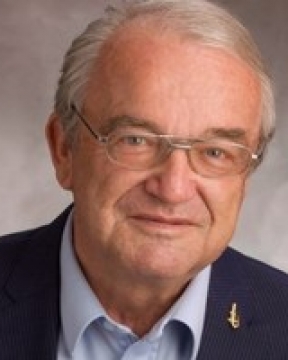 |
Hans LeuenbergerUniversity of BaselBlockage Of The First Excited State Of 198hg 2nd Intl. Symp. on Technological Innovations in Medicine for Sustainable Development Back to Plenary Lectures » |
Abstract:A 197Au solution with bi-distilled water was prepared using a single gold electrode, connected to a special oscillator with a sinewave voltage of 50 Hz at 160 V. It was known that it was not possible to detect gold in such a solution by chemical analysis at room temperature. Thus, neutron activation analysis (NAA) by creating 198Au seemed to be the method of choice for detecting the missing gold. 198Au is a b emitter that decays to an exited state of 198Hg nucleus, subsequently emitting a g photon of 411.8 keV, that can easily be detected. For this purpose, three solutions were prepared: Sample 0: 100 ml of water as zero-reference in case of impurities. For samples I and II, 200 ml of the same water were treated by a single electrode for 16 hours. Immediately after the treatment, the 200 ml were split into two samples perfectly mixed: sample II, i. e. 100 ml of the treated water was heated above 60°C, sample 0, had been heated before, and sample I, i. e. 100 ml of the treated but not heated water. All 3 samples together were exposed to a flux of thermal neutrons. Result: only the treated and warmed sample II showed the typical peak of g photons with the energy 411.8 keV. Samples 0 and I did not show any trace of gold. Sample I, as well as the other samples, were kept at room temperature for 11 days. The other samples behaved as expected. After a delay of 11 days, sample I was heated above 60°C. Interestingly, no g - photon was detected at 411.8 keV and after a second NAA (on the same, i. e. 11th day) no trace of Au was present anymore. A tentative theoretical explanation of this phenomenon is given by assuming that water can be considered as a semiconductor. Thus, also a photonic band gap can be expected. In other words, and in this context, the 411.8 keV g - rays were localized, if the temperature of the solution is kept below 60°C. This hypothesis is validated by the experimental results, since after heating up sample I above 60°C a mirrorless lasing happened. The fact that no trace of gold was visible is the proof of concept, that the remaining 197Au nuclei show a photonuclear reaction 197Au (g, n) 196Au decaying rapidly into 196Hg. However, in a first step the 198Au (g, n) 197Au reaction occurred leading to a reversal of the 197Au (n, g) 198Au reaction. In other words, the photonuclear reaction excited the collective movements of the neutrons and protons of the 197Au nucleus leading to giant g resonances, and to the ejection of a neutron. In a second experiment the gold electrode was activated by exposure to thermal neutrons. Very similar results were obtained with the exception that between 15% to 20% of the unheated sample showed the 411.8 keV transition. |
|